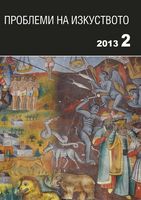Антимодерност, туризъм и образи сувенири:Димитър Добрович
Antimodernity, Tourism and Souvenir Images: Dimitar Dobrovich
Author(s): Angel AngelovSubject(s): Cultural history
Published by: Институт за изследване на изкуствата, Българска академия на науките
Summary/Abstract: The author analyzes the relationship between tourism and visual images that functioned as souvenirs in Rome in 1840-1870’s. The souvenir images informed a collective idea of the so- cial life in Rom which could be called „tourist imaginary.” Souvenir images corresponded to the official antimodern policy of the Papal State. Production and dissemination of visual images in the middle of the nineteenth century was part of a network linking the technical resources, infrastructure, people, attitudes, services, capitals, legislation, increased security (including elimination of robbery), and fixing the time zones in Europe. The author argues that the works of then living in Rome painter Dimitar Dobrovich was part of a huge production of exotic images nourishing the touristic imaginary. Dobrovich’s paintings present peasants and labour activities untouched by modern social changes. Poverty, toil, malaria are ex- cluded from the „frame.” The result is ahistorical idealization. Modernity, rightly, has been defined through the images of the cities and industrialized nature in the 19 c. But modernity also includes its opposite. Rome in the late eighteenth century to the 1870s presents exemplary the antimodernity. The antimodern images in the 19 c. were possible because of the existing of modern forms of life. Idealized, ahistorical images of people’s lives (harmony with nature, „paradise” spots, carefree human being, and unchanged forms of life) were elements of this antimodern ideology that was artistic, political, social, economic, religious, and philosophical.
Journal: Проблеми на изкуството
- Issue Year: 2013
- Issue No: 2
- Page Range: 34-43
- Page Count: 10
- Language: Bulgarian
- Content File-PDF

